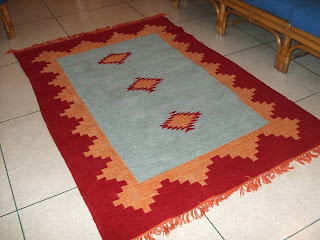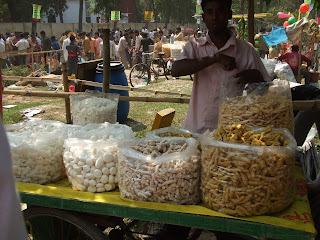

Safe, did I say? Well, they were certainly safe from the elements. Their babies were warm and unharmed in the snuggly little nest while the parents fetched food.

Growing up within the security of concrete walls around them, the babies grew up and one day flew away. Leaving the parents cootchie-cooing again. It was fun watching their renewed courtship. And very touching too. Sparrows are monogamous birds, and usually mate for life.
While we were on our India trip, Julekha took advantage of our absence to firmly close up the entrance to the nest with a piece of cloth wadded into a tight ball. A few days later after our return from India (we had to fire Julekha but that's another story, and the household was in a bit of a disarray), I saw to my horror that the sparrow nest had been closed up! Opening it up unleashed another horror - a dead baby sparrow emerged followed by a dead sparrow mother!! Their bodies had shriveled and they were just beak and feathers and stiff legs! How they must have suffered in that small space, in the dark, breathing in the last bits of air, trying desperately to get out, and slowly suffocating to death!
I called down the curses of all Gods upon the head of Julekha. I am not a violent sort, but if she had been around, I would gladly have throttled her to death! An eye for an eye, doesn't it say? Justifiable homicide, in my opinion. But some would call it over-reaction, I'm sure. Anyway, I fervently hope that Julekha will suffer just such a cruel death, or at least know the fear of suffocating to death.




































































































